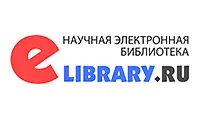Abstract:
The paper proposes an analysis of the national fisheries sector in terms of measures to regulate fishing and sustainable use of fishery resources in the Republic of Moldavia. The richest ichtyofauna is found in the southern republic's catchment areas, which are also the most affected pisicic areas by catches by unacceptable methods. Ichthyocenoses of national natural ecosystems have been heavily affected in recent years, mainly under the direct action of the human factor. Excessive fishing, through illegal methods or in protected areas, the lack or insufficiency of systematic controls by the competent institutions have seriously affected the country's fish fauna. The research has shown the increase of fish fraud cases in recent years, but also a better organized activity of the Fisheries Service, the main control body in the field. The use of unauthorized fishing gear, lack of authorizations, non-observance of prohibited periods or protected natural areas are the main offenses found in the sector. Proper management of aquatic biological resources can allow sustainable conservation and use of Moldavian aquatic biological resources, and a series of measures at national level for regulation of the sector are necessary and applied.






